Helen Edwards was a formidable force in the field of accelerator science, whose impact can still be felt around the world today. Anita Chandran finds out more about her contributions to particle physics
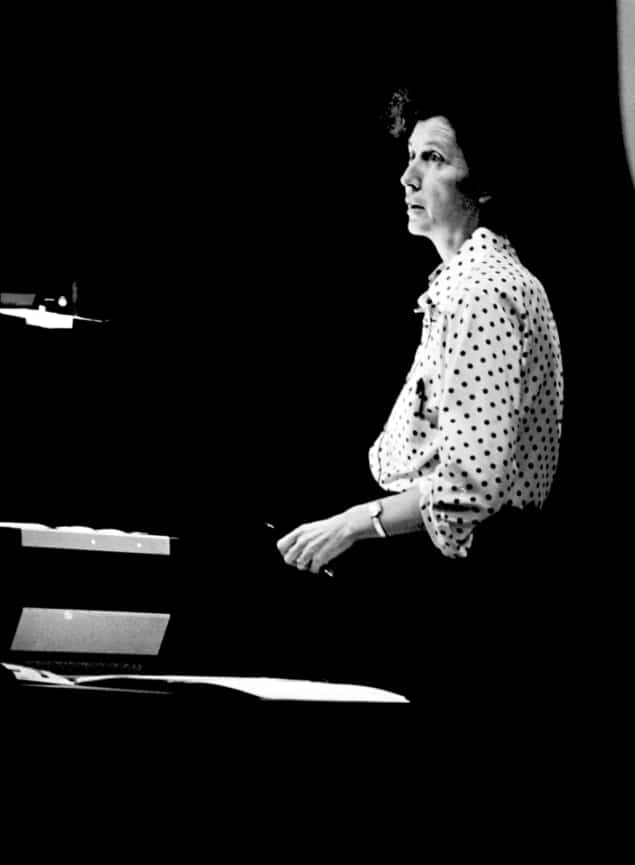
There remains much about the world that is unknown, on scales from the immensely large to the extremely small. The physics of the Standard Model concerns itself with the latter, looking beyond molecules and atoms to examine the fundamental building blocks of nature: elementary particles. These are what give matter its structure, lead to electricity and magnetism, and give light to the universe.
But proving the existence of an elementary particle is no mean feat as they can be extremely short lived or interact only weakly with their surroundings. To detect them, scientists must often build immense, complex and highly sophisticated instruments such as particle colliders. In these powerful machines, particles are accelerated to relativistic speeds and then made to strike one another, with scientists inferring the existence of elementary particles by analysing the results of the collisions.
One such accelerator was the Tevatron, a synchrotron 6.3 km in circumference constructed in the 1980s at Fermi National Accelerator Laboratory (Fermilab) in Illinois, US. Until it was supplanted by CERN’s Large Hadron Collider (LHC) in 2009, the Tevatron was the world’s highest-energy particle accelerator, and it still is the second most powerful to have ever existed.
The techniques she pioneered allowed us to push the frontiers of particle physics
Helen Thom Edwards was the accelerator scientist who oversaw the construction and implementation of the Tevatron, from planning right until the end of its scientific operation. During her career, which spanned more than 40 years, the techniques she pioneered allowed us to push the frontiers of particle physics. A discerning physicist, Edwards was a force of nature in the field, and an ardent proponent of international collaboration.
A search for “new physics”
Born on 27 May 1936 in Detroit, US, Edwards began her physics career at Cornell University, where she obtained her bachelor’s and master’s degrees and then did a PhD in experimental physics, in which she sought to increase the energy of particle accelerators. After completing her studies, Edwards remained at Cornell as a research associate in the Laboratory for Nuclear Studies, where she was heavily involved with commissioning the university’s 10 GeV electron synchrotron. Edwards worked initially under the supervision of Robert Wilson, before he left to become founding director of Fermilab.
In 1970 Wilson appointed Edwards as associate head of the Booster Section at Fermilab, and she later became head of the Accelerator Division. While at Fermilab, Edwards’ primary responsibility was designing, constructing, commissioning and operating the Tevatron, which used superconducting magnets to accelerate protons and antiprotons up to 99.999954% of the speed of light (see box “Fermilab’s teraelectronvolt accelerator”). To achieve this was an incredible scientific and engineering challenge, and one that Edwards took in her stride. She was active in the hands-on, nitty-gritty, experimental work required to construct the accelerator, as well as having a formidable scientific intuition.
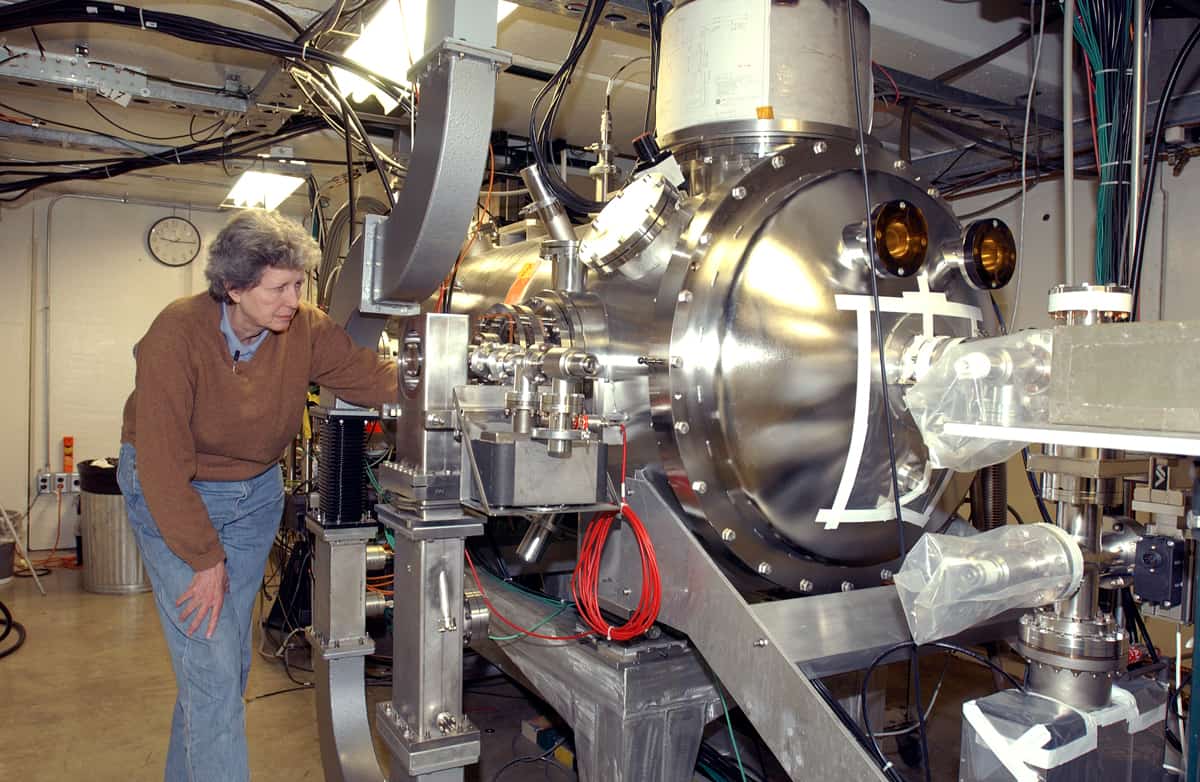
“She was always absolutely right,” wrote Timothy Koeth in Fermilab’s obituary for Edwards following her death on 21 June 2016 at the age of 80. Now at the University of Maryland, Koeth studied under Edwards during her time at the Tevatron. “She had this intuitive and innate grasp of the material, and she was never wrong in the 20 years I knew her. She understood complex systems from every aspect – operational or technological.”
The Tevatron finally switched on and began delivering beams of accelerated protons and antiprotons in 1983, some 13 years after Edwards had joined Fermilab. Among the Tevatron’s accomplishments was the discovery of the Bc meson in 1998, the top quark in 1995 and the tau neutrino in 2000. These were all in part due to the constant improvement of the instrumentation at the synchrotron, which Edwards played a crucial part in implementing.
Fermilab’s teraelectronvolt accelerator
The Tevatron was a synchrotron that could accelerate protons and antiprotons to energies of up to 1 teraelectronvolt (TeV), giving rise to its name. It began operations in 1983 and was the world’s largest proton–antiproton collider until it was decommissioned in 2011. It was also the world’s most powerful particle accelerator until the Large Hadron Collider (LHC) at CERN broke energy records in 2009.
Tevatron’s accelerator consisted of a ring of superconducting magnets, 6.5 km in circumference, built directly underneath Fermilab’s first accelerator, the Main Ring. To achieve superconductivity, the entire Tevatron ring had to be cooled to near 4 K using liquid helium. The facility had two detectors that began working in 1992: the Collider Detector at Fermilab (CDF) and the DZero (DØ) experiment.
Both DØ and CDF were used to study the collisions of protons and antiprotons using different technologies. Sitting at four storeys in height, and weighing 5000 tonnes each, these behemoths could detect collisions occurring close to the speed of light, which result in unstable flashes of energy that decay into stable particles, replicating the moments just after the Big Bang.
Physicists at the Tevatron observed the first proton–antiproton collisions in 1985, and the implementation of CDF and DØ in 1995 led to the study of even smaller particles. Perhaps the most famous discovery at the Tevatron was that of the top quark in 1995, verified by scientists working on both the CDF and DØ experiments. Scientists also measured the top quark’s mass, later allowing them to determine the mass of the elusive Higgs boson.
In 2000 the Tevatron was responsible for the discovery of the tau neutrino, an unreactive particle that took three years of data analysis to uncover. Its scientists also proposed a new mechanism for the asymmetry between matter and dark matter in the universe by investigating the decay of a particle known as the neutral B meson.
Incredible forward momentum
It wasn’t just her depth of knowledge that marked Edwards out – it was also her ceaseless drive to make science happen as efficiently and effectively as possible. She was deeply determined – active in the design of the Tevatron magnets, the implementation of accelerator components, and in physically diagnosing issues in the Tevatron tunnel (see box “Pioneer of a new era of accelerator science”). She would frequently work all night to ensure instruments were calibrated to a high standard.
But, like many scientists before her, Edwards would get frustrated by the trappings of red tape. “She didn’t put up with bureaucracy when she wanted something done and knew it could be done,” says her former colleague Paul Czarapata, now deputy chief engineer of Fermilab and Accelerator Division associate head. “She didn’t ask for permission or for forgiveness,” Czarapata continues with a smile. “She demanded both.”
He describes an occasion when Edwards needed to take a piece of “fairly expensive” equipment to the technical division for some work, but was told it would take over a week to have it packaged, boxed and transported. “She asked me for a hand getting it over,” explains Czarapata. “Half an hour later I go outside and there’s a garbage can sitting there with packing foam all around and the component inside. I looked and said ‘well, it could probably bounce about in there’ and she considered it and said ‘yeah, you’re right’, so she added more foam. We then lifted it into the back of a van and she climbed in too to hang on to it.”
What high-energy physicists were trying to do at Fermilab had never been done before. Part of the enormous instrumentation required for the Tevatron was a system of alternately poled superconducting magnets to align the accelerated particles. The resulting field had to be strong enough to hold orbiting particles for long enough that they could collide, making it the world’s first large-scale superconducting system. But cooling such a large ring to cryogenic temperatures was a challenge for the Tevatron team, which suffered many setbacks.
Any small fluctuations in temperature could turn a superconducting magnet into a regular one, but – with so many magnets to keep track of – it was hard to find the errors. Edwards persisted, an encouraging presence with a determination that the Tevatron accelerator would function as intended. Indeed, Edwards and her team worked so hard on the Tevatron’s delivery that they became known as the “tunnel rats” because they would not see daylight for weeks, arriving underground before sunrise, and leaving after sunset.
Edwards had a formidable reputation at Fermilab, and was known for being extremely capable at managing the strengths, weaknesses and personalities of those involved in her team to obtain the best results. She had a long-sighted way of approaching science that demanded a very fast-paced way of working. At the time, and especially being a woman in the very masculine field of experimental physics, it would not have been easy to command the respect of so many people in such an intensive research environment.
“I noticed that most men were just terrified of her because they were standing in her way,” Czarapata continues, recounting the times that Edwards felt held back by bureaucracy. “But if you were someone who worked with her, you were just far and away in a good place. She respected you.”
Pioneer of a new era of accelerator science
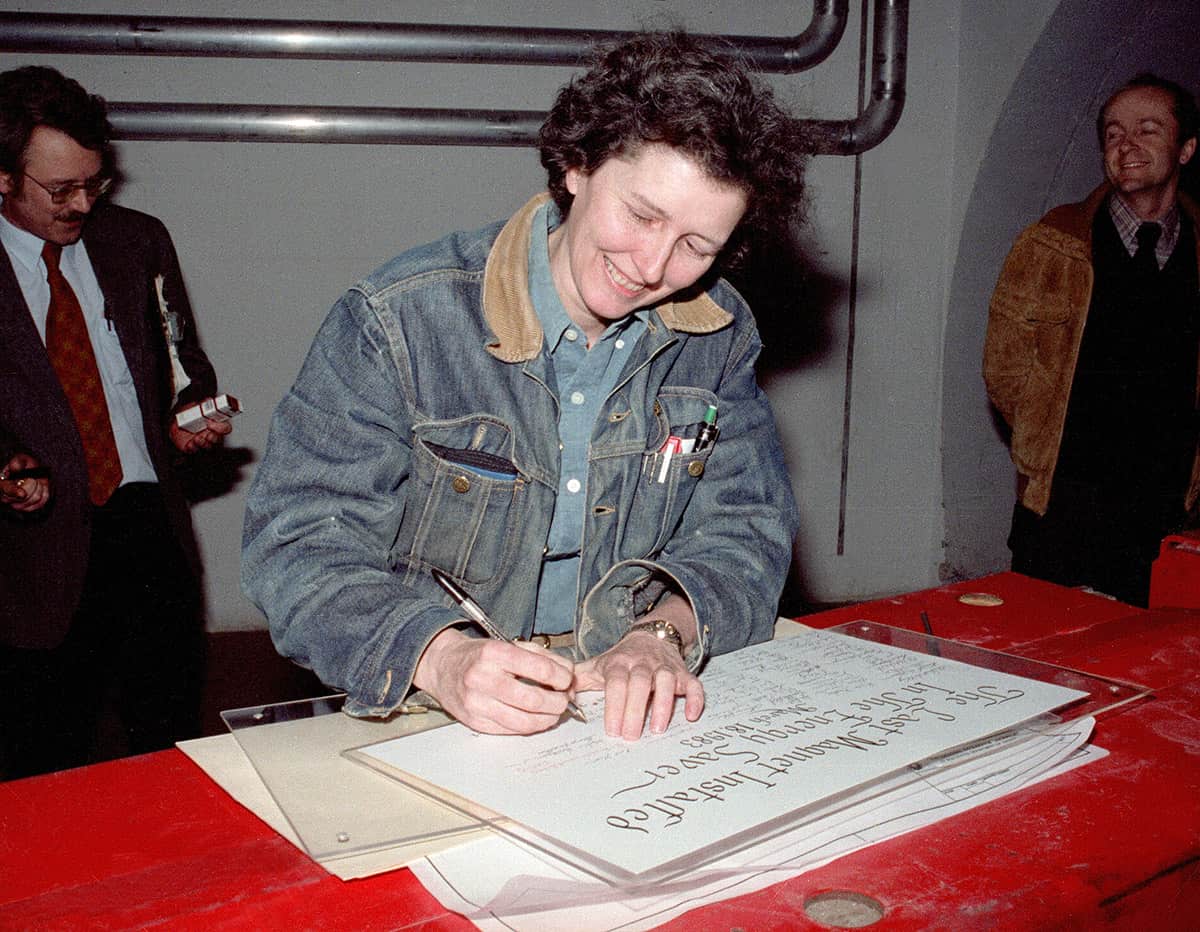
Helen Edwards first worked as a research associate at Cornell University’s 10 GeV Electron Synchrotron, where she was involved with developing the technique of “resonant beam extraction”. Introduced in the 1950s, it focused on efficiently extracting high-energy particle beams from circular accelerators.
Edwards joined Fermilab staff in 1970, helping to bring the facility’s 8 GeV Booster Accelerator into operation with Roy Billinge. The machine’s 96 magnets bent proton beams around a circular path, and its design underpins Fermilab’s current Booster. After completing tens of thousands of revolutions in milliseconds and gaining energy with each revolution, the protons were fed into the Main Ring – Fermilab’s first primary accelerator, which began operation in 1972 and went on to deliver protons to its successor Tevatron until 1997.
Edwards is known for overseeing the implementation of the Tevatron or, as it was frequently called, the “Energy Doubler”. This new synchrotron was constructed in the same tunnel as Fermilab’s Main Ring accelerator with the promise of delivering at least twice as much energy in its particle beam. Perhaps the greatest design challenge the Tevatron team faced was establishing the large network of superconducting magnets required. Small misalignments in the coils used for generating the magnets could cause them to “quench”, no longer acting as superconductors. These misalignments could be caused by disruptions as small as the process of turning on the cooling systems. Solving these issues was Edwards and her team’s triumph.
To build the over 774 superconducting magnets used in the Tevatron, Edwards and colleagues purchased 95% of all the niobium-titanium produced in human history in the form of superconducting wire. They developed a special configuration known as the Rutherford wire, consisting of 23 strands, which had the perfect mechanical form for use in a magnet. As a result of the quantities of niobium-titanium needed for the Tevatron, its commercial production became standard, making superconducting wire readily available and paving the way for the implementation of MRI machines in hospitals.
A tight scientific unit
Although Edwards might appear intense and intimidating, she was also a serene person, deeply committed to nature. “She was very gentle, but it ended at the gate,” Czarapata says, referring to the entrance to the Tevatron site. Once Edwards crossed the threshold, her laser-sharp focus would descend, and all niceties were abandoned. None more so than with her husband, Don Edwards, who was also an accelerator scientist at Fermilab.
“When they were in the control room together, people used to clear out,” Czarapata continues. “People would back away to far corners because the two of them would be butting heads over some topic. They were often on opposite sides of the fence. But when they crossed the gate to go home, it was different.”
Helen and Don Edwards’ careers rose in parallel, and between them they ran five separate commissioning teams focused on getting the Tevatron up and running. The two later endowed a chair in physics at their alma mater, Cornell University, and continued to work together at both Fermilab and the DESY lab in Hamburg, Germany. Edwards viewed them as a tight scientific unit, and when awarded the 2003 Robert R Wilson prize from the American Physical Society, she said, “I believe this award is for my husband as much as for myself, as we have worked effectively as a team over the years.”

Edwards was also committed to her PhD students and had a great love of teaching. Always surrounded by graduate students, she was a hands-on mentor, whether that involved explaining a theoretical concept or demonstrating how to do things. If asked a technical calculation about the accelerators, she would briefly disappear into her office and produce a full calculation 20 minutes later.
Edwards went out of her way to create opportunities for her students and trusted them to work on even the most difficult and involved of experimental procedures from the start. In her lab, a PhD student could be expected to work with high voltages, beams of electrons, high-energy radio-frequency signals and extremely high-pressure vacuums. She encouraged students to take the lead on talks and travelling to conferences, and had little patience for taking the spotlight in public.
“It was a form of paradise,” wrote Koeth in 2016. “Every time there was a tour at [Fermilab], she had me give it. She was a very good instructor.”

Lia Merminga: directing the future of Fermilab
DESY and the Superconducting Super Collider
In 1989, once the Tevatron accelerator was constructed, Edwards began working as technical director for the Superconducting Super Collider, an 87 km circumference synchrotron that was planned in Texas. After developing the site-specific design, Edwards parted from the project in 1991. Although the SSC was later abandoned part-way through construction due to rising costs, the developments that she made in accelerator technology underpinned the formation of the Fermilab Accelerator Science and Technology (FAST) facility for designing and testing accelerators, which still operates today.
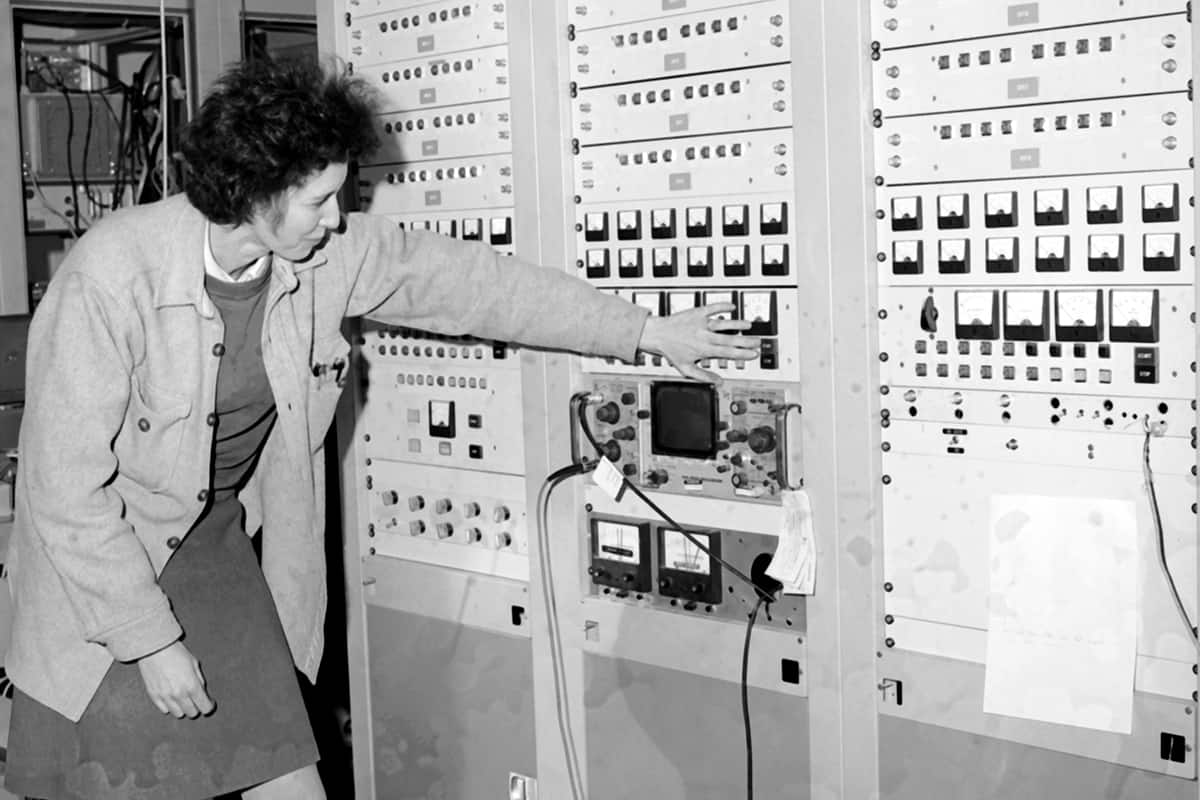
During her career, Edwards also helped to design the Teraelectronvolt Energy Superconducting Linear Accelerator (TESLA) at DESY. For this, she brought decades of expertise, and her contributions eventually led to the construction of the lab’s FLASH free-electron laser, which still produces world-class science.
Helen and Don retired to Montana in the early 1990s, though both continued to work as guest scientists at Fermilab. The first thing Helen did was build a birch bark canoe from scratch. She was an avid lover of the natural world and deeply environmentally conscious. She rigged trail cameras all around the remote woodlands near her home, to capture photographs of wildlife from elk to cougars in their most undisturbed form. She even took photos of the rings of Saturn from a backyard telescope with a camera coarsely rigged to it. Whenever she was back in the lab, she would immediately show her colleagues the photographs with excitement.
The last days of the Tevatron
In 2011, after 28 years of operation, the Tevatron was finally decommissioned. Having overseen its life – from commissioning to scientific productivity – it was fitting that Edwards should be the person to officially switch the accelerator off. When doing so, she wore a cowboy hat and boots because a former director of Fermilab had once referred to the Accelerator Division as “a bunch of cowboys”. The rest of the team donned their Stetsons too.
For Helen, her best achievement was always the next one
Paul Czarapata
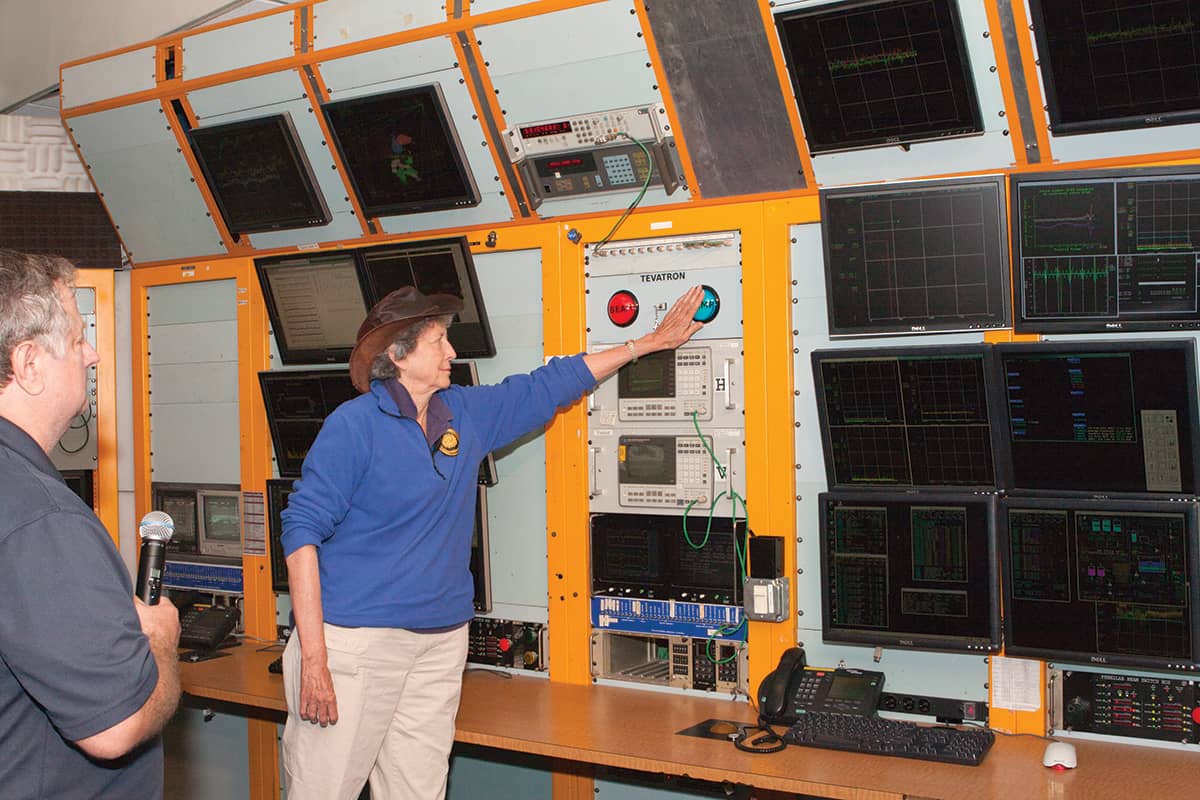
But the Tevatron wasn’t going out without a last laugh: as Edwards pressed the switch, the beam refused to turn off. Her second attempt succeeded, and several hundred scientists who were watching the decommissioning from Fermilab’s auditorium breathed one last sigh of relief. Having spent so long working on the Tevatron, Edwards must surely have felt bittersweet about seeing the accelerator come to a halt. But Czarapata says that she never looked back or focused on the things she had already achieved. “I don’t think she thought about it that way,” he says. “For Helen, her best achievement was always the next one.”



